✨You Can Touch the Times Square New Year's Eve Ball!
Find out how you can take home a piece of the old New Year's Eve ball!


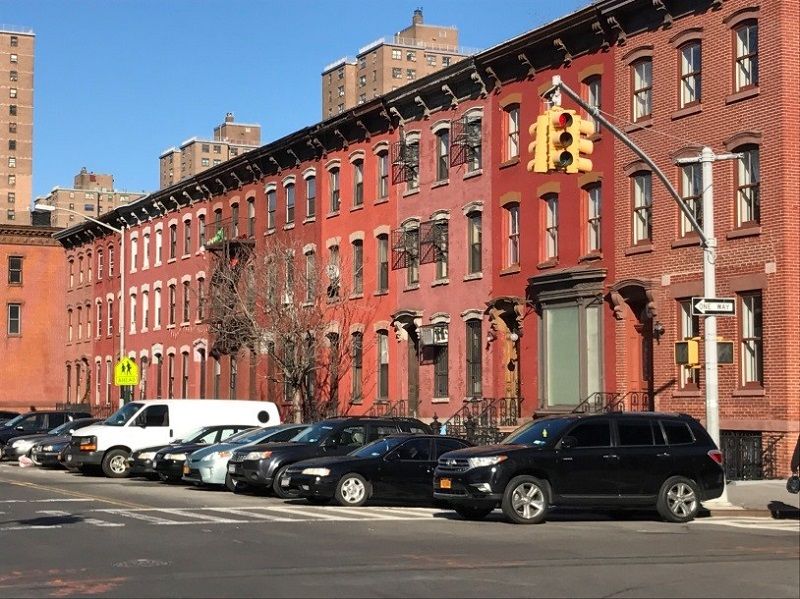
Photo courtesy Mott Haven Historic Districts Association
Located in the southwestern portion of The Bronx, the primarily residential neighborhood of Mott Haven is undisputedly one of the borough’s most popular areas. While it’s currently undergoing a period of revival and change, the neighborhood boasts a rich and colorful history. Named after iron works owner, Jordan Mott, who purchased the land in 1846, Mott Haven has been home to various industries throughout the 19th and 20th centuries, spanning everything from metal works to pianos. Most of these businesses no longer operate, but relics of the neighborhood’s past still very much remain.
To celebrate Mott Haven’s architectural and historical legacy, we’ve rounded up 10 of the most beautiful (and noteworthy) buildings you can find in the neighborhood with help from Samuel Brooks, the President of the Mott Haven Historic Districts Association that seeks to raise awareness about the area.
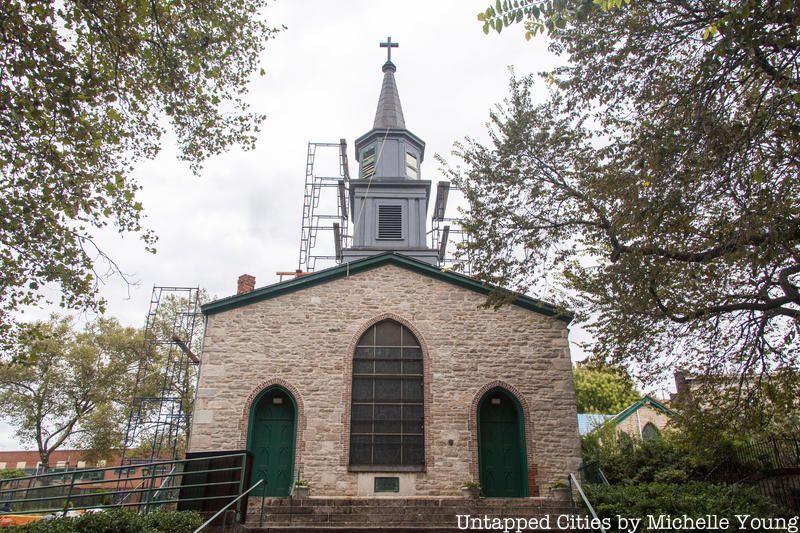
The first church in The Bronx, St. Ann’s was built in 1840, and was originally founded by the Morris family. It was donated by Gouverneur Morris Jr. as a family monument (the Morrisania Memorial), and serves as his resting place, along with other notables, such as Louis Morris. The church itself, which sits on 295 St. Ann’s Avenue, is named after Ann Morris, a descendant of Pocahontas.
Architecturally speaking, St. Ann’s is a fieldstone building, built in the Gothic Revival style with a Greek Revival style tower. The complex it sits in was added to the National Register of Historic Places in 1980, and designated a New York City landmark in 1967. It includes a stone parish house that was added in 1916, a graveyard housing the Morris family crypt, and a late 19th-century Sunday School and gymnasium building. Today, St. Ann’s operates as a hub for community events, including an after-school program. It’s also home to the only swings in the neighborhood, and a “really good jungle-gym.”
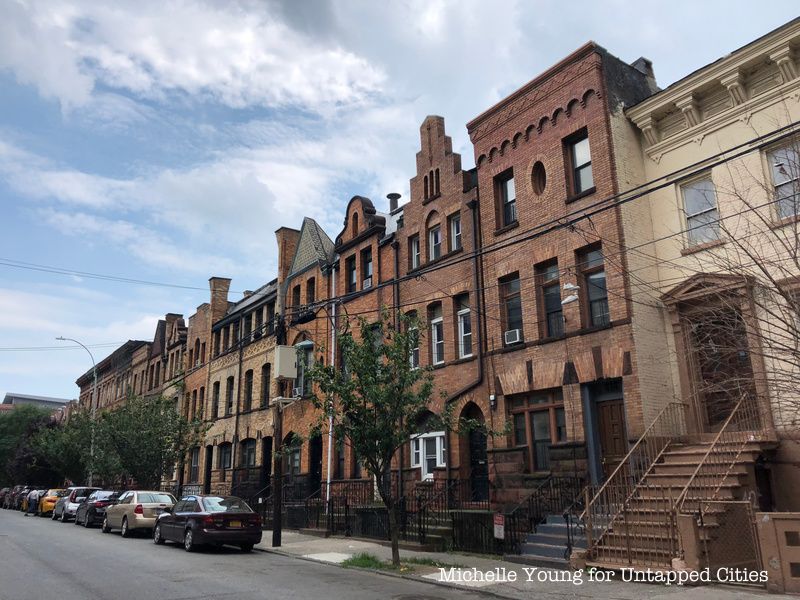
Today, Mott Haven is comprised of three designated Historic Districts: Mott Haven, Mott Haven East and the Bertine Block, all of which boast beautiful, brownstone-style rowhouses. Designated on April 5, 1994, the Bertine Block Historic District consists of thirty-one residential buildings lining both sides of East 136th Street between Willis Avenue and Brown Place. Within the boundaries of the district are four groups of rowhouses and two groups of tenements that serve as stunning examples of neo-Grec, Queen Anne, Romanesque Revival, and Renaissance Revival architectural styles.
The buildings, designed between 1891 and 1895, not only reflect the stylistic trends in residential architecture in the late 19th-century, but also the history of real estate development in the southwestern portion of The Bronx. The district takes its name after the most active developer Edward D. Bertine, who erected three of its four rows, including the “Bertine Block,” which is comprised of a row of Queen Anne houses that were designed by prominent architect, George Keister. According to a 1994 NYCLPC Historic District Designation Report, little is known about Bertine, although New York City directories state that he had been a Manhattan milk dealer in the 1870’s and ’80s.
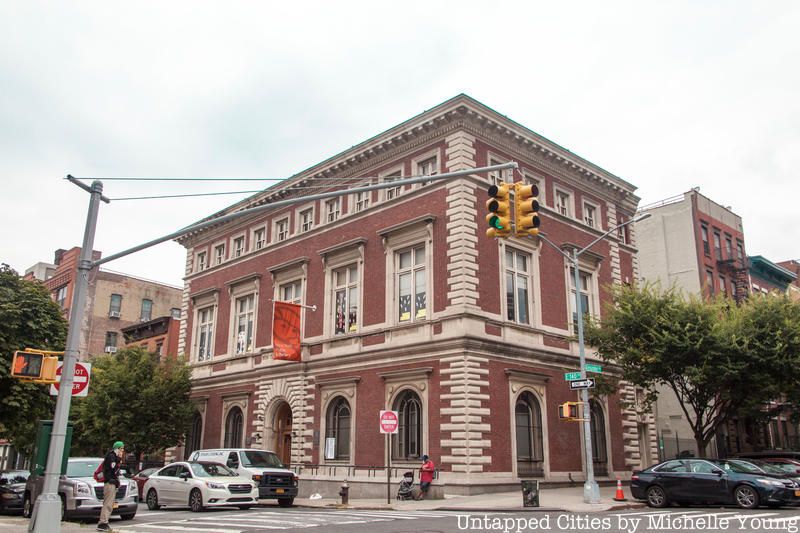
Opened in 1905, the Mott Haven Branch of the New York Public Library is housed in a red Flemish brick and Indiana limestone structure that stands on the northwest corner of Alexander Avenue and East 140th Street. Today, it’s the oldest NYPLbranch in The Bronx, serving a diverse community through a variety of programming, including English classes, poetry and book readings, and concerts.
Declared a New York City landmark in 1969, the building was funded by Andrew Carnegie and designed by Babb, Cook & Willard in the Italian Renaissance Revival style. The same firm quite notably designed Carnegie’s own mansion on Fifth Avenue and 91st Street, which now houses the Cooper-Hewitt Museum. Also, read about 16 of the remaining Andrew Carnegie public libraries across the city.
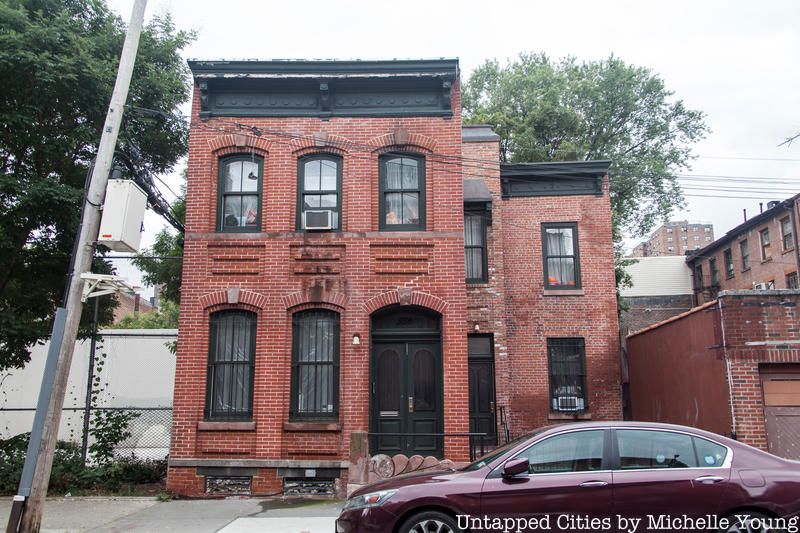
Located on the South side, between Alexander and Willis Avenues, 336 East 140th Street is a two-story house that’s identifiable by its segmental-arched windows with brick panels in between. It was formerly a stable owned by John Knox, who converted it into a residential home for A. J. Rogers in 1876. Other notable features include its wrought iron railing and its roof cornice that has unusual wood bosses in the frieze.
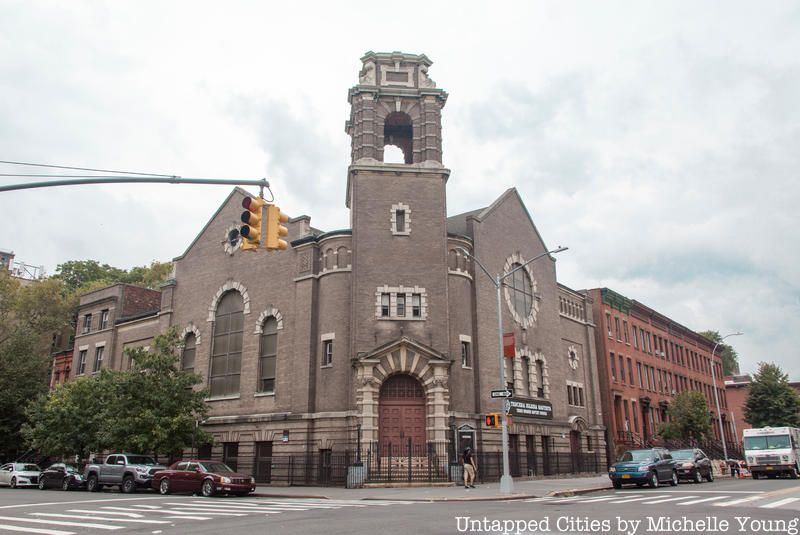
Designed by Ward & Davis in a modified Romanesque style, the Third Spanish Baptist Church (Tercera Iglesia Bautista) stands on the northeast corner of Alexander Avenue and East 141st Street on 322 Alexander Avenue. It was originally built for the Alexander Avenue Baptist Church in 1900-1902, and was considered to be extremely modern in style.
“The stark simplicity of the design is balanced by the rich detail at top and bottom which, fortuitously, in view of the present congregation, suggests Spanish antecedents,” a NYC.gov report notes about the institution. Particularly noteworthy is the corner tower that’s “Baroque in feeling with many Spanish features.” When the Third Spanish Baptist Church purchased the granite and brick building from the former Alexander Avenue Baptist Church, the furnishings included a 1901 Hillgreen, Lane & Company organ in the auditorium. With Sunday school rooms, a ladies’ parlor and oak features, it’s big enough to seat 750 visitors.
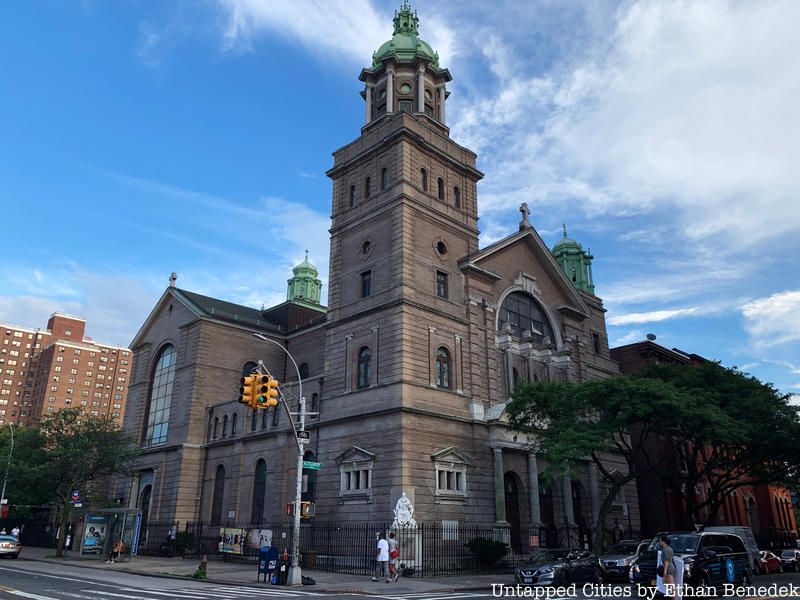
Another religious institution, St. Jerome’s Church on 230 Alexander Avenue was designed by Delhi & Howard in the style of the Italian Renaissance with features reminiscent of Hispanic antecedents. The parish was established in 1869 by the Reverend John J. Hughes, giving rise to a block-long complex that consisted of a rectory, a school, completed in 1871, and a church building that was constructed in 1898.
In 1898, The New York Times reported that the forthcoming church building would “be one of the finest churches in the Borough of the Bronx” when completed. In 2013, however, the school shuttered due to financial constraints. It was one of 22 “at risk” schools the Archdiocese of New York had to close in order to “keep the entire system afloat,” wfuv.org reported at the time.
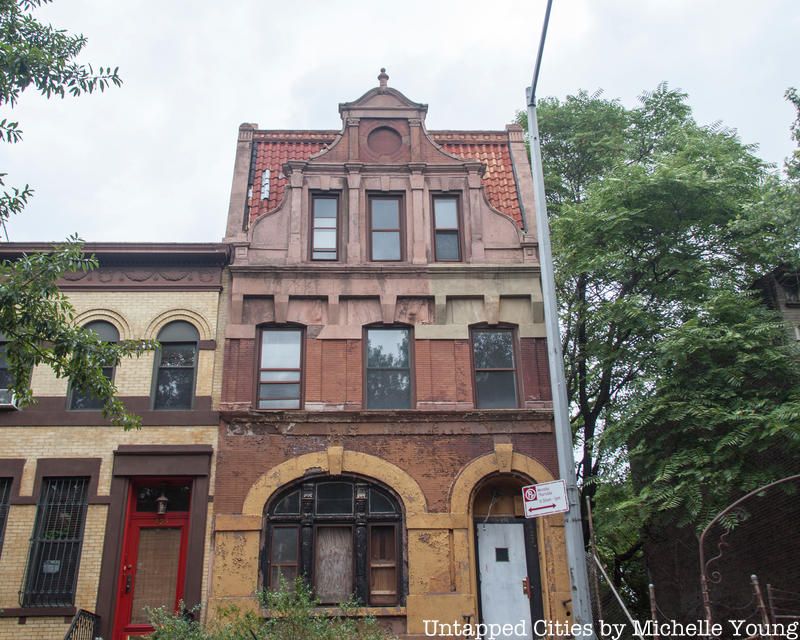
Stroll past 427 East 140th Street and you’ll find a stunning Queen Anne Rowhouse, which was built between 1897 – 1900, and designed by architect Walter H.C. Hornum. It notably served as the home of neighborhood developer William O’Gorman, his wife, Julia, his three children, one grandson and three servants. Interestingly, O’Gorman built many of the “uninspired buildings” in the area, but went all out for four of the 11 buildings that comprise the row at 407-427 East 140th Street. His own home is naturally one of those four.
Today, it’s owned by St. Peter’s Lutheran, which uses the building as a community-orientated service space. St. Peter’s has had possession of the building for decades, pending a period of time when the city reclaimed the rowhouse.
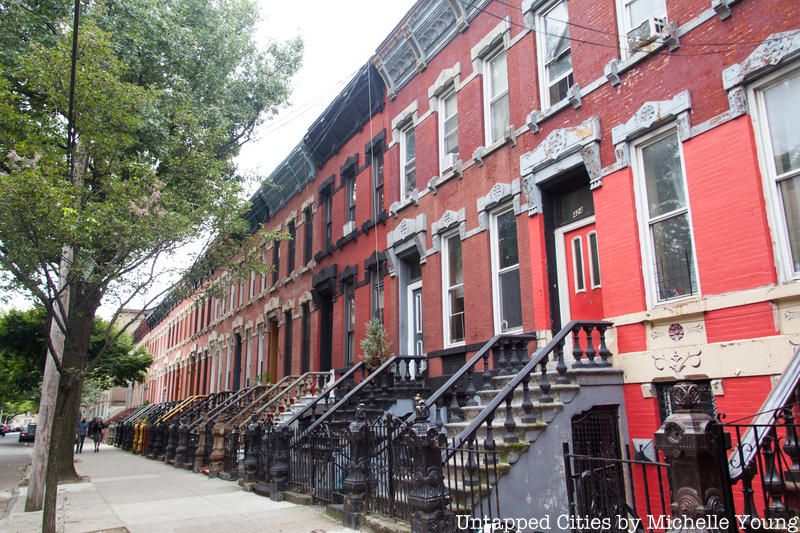
The Mott Haven East Historic District was designated on April 5, 1994, and consists of a small enclave of rowhouses and tenements on East 139th and 140th Streets, between Willis and Brook Avenues. One of the oldest settled areas of borough (and the first in The Bronx to be developed with rowhouses), according to the 1994 Landmarks Preservation Commission designation report, this district is comprised of three groups of single-family rowhouses and two groups of tenements that exhibit stylistic elements of neo-Greco, Queen Anne, Renaissance-inspired, and Flemish Revival buildings — much like those found on the Bertine Block.
This first two groups of rowhouses on East 140th were built by developers William O’Gorman and Hermann Stursberg, both of whom completed other projects in the neighborhood. The third set was also built by O’Gorman to the designs of architect William Hornum. Additionally, one of the group of tenements was designed by Neville & Bagge and the other by George F. Pelham.
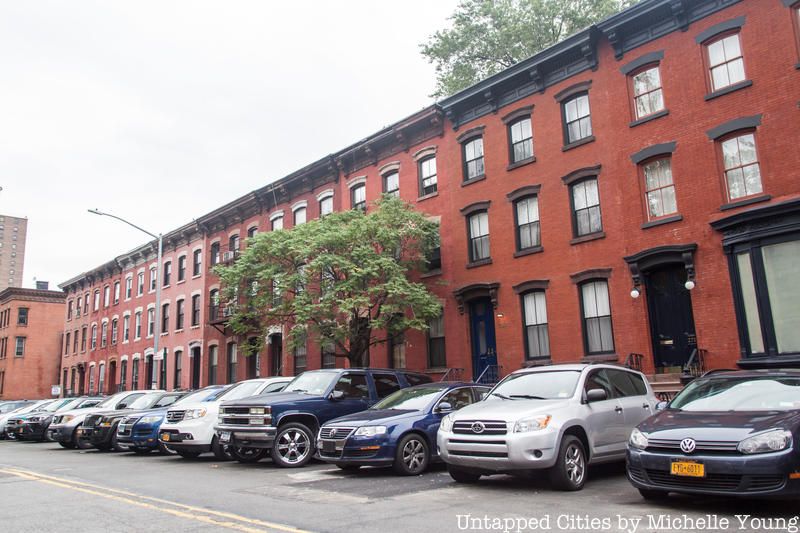
The Mott Haven Historic District, located on Alexander Avenue between East 138th Street and East 141st Street, was designated on July 29, 1969, and listed on the National Register of Historic Places in 1980. Alexander Avenue is home to the oldest townhouses in The Bronx, erected between 1863 and 1865. Real estate developer Edward Willis, after whom Willis Avenue and the bridge is named after, lived at No. 280 Alexander Avenue.
Within the Mott Haven Historic District are primarily residential buildings, but it’s also home to the 40th Precinct police station, the Mott Haven branch of the New York Public Library and the Saint Jerome’s Roman Catholic Church.
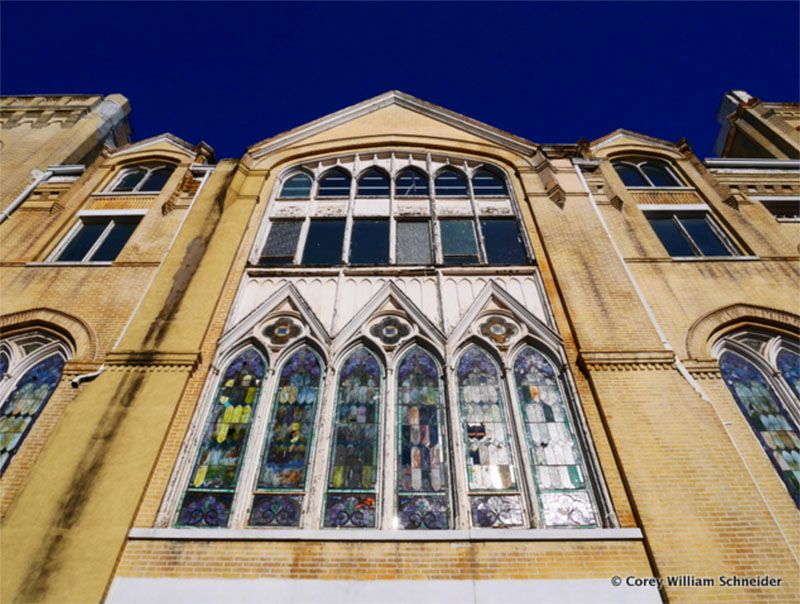
Located on the corner of 141st Street and Willis Avenue, United Methodist Church, originally called Willis Avenue Methodist Episcopal Church, was built in 1900 by George W. Kramer, who designed several churches across Brooklyn and other states. This 100+ year old Gothic Revival church stands out thanks to its unique beige facade with white-painted wood windows that feature impressive colored stained glass! Pay a visit and don’t forget to look up!

Next check out The Top 10 Most Stunning Art Deco Buildings Art Deco Buildings in NYC and read 10 Must-See Buildings by Cass Gilbert in NYC.
Subscribe to our newsletter